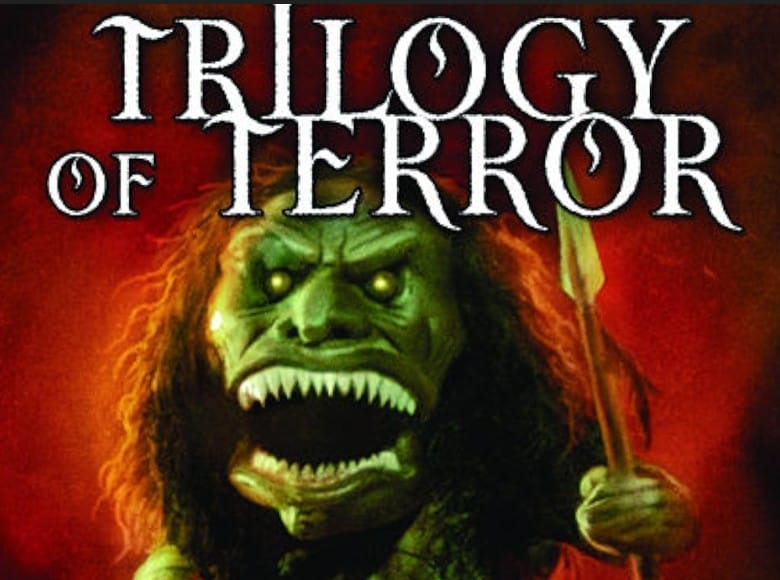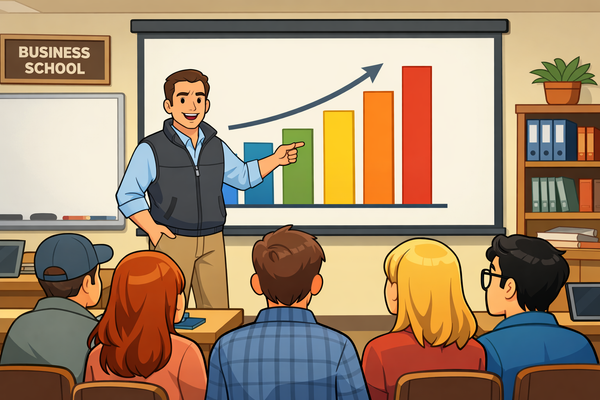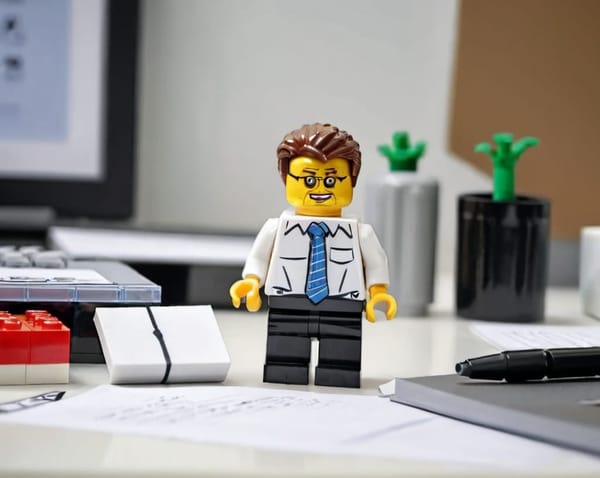Trilogy of Terror Part 1: Twitter
What has captured my attention lately is the slow moving crapshow that is Twitter, the chaos of the FTX debacle, and now, the failure of SVB. Some thoughts on the first of this triumvirate

Trigger Warning: This post will be harsh on Elon Musk, and it will have some NSFW language. If that is not your thing, please navigate away now.
As a product manager, one of the traits I have lived is to be a voracious consumer of news. Business news, world affairs, politics, science, whatever, it all is part of my routine to keep up with the world.
Why? Frankly, there are clues to people’s behaviors in all of these sources of information, and by reading widely, you begin to see threads in the disorder, that once you can identify them, and begin pulling them together, it can help crystalize your thinking and planning for the future of your products and business.
Ok, that’s the “WHY”, but there are other benefits. Mainly, being informed is just a good practice, and it also can be very entertaining.
Lately, there have been three distinct, yet at some level related, current events that have captured my attention. The saga of Twitter under Musk, the shit-show that is the FTX bankruptcy, and just this week, the failure of Silicon Valley Bank.
Twitter under Elon Musk
Wannabe Edge-Lord Elon Musk appeared last spring to make an impulsive decision to purchase his favorite shitposting site, Twitter. At the time, he was worth about $275 BILLION dollars, so he could do something incredibly stupid as offer about a 25% premium to the Twitter share price to buy the company. Naturally, this was largely to get to a price point that had one of his giggle inducing (at least if you partake in recreational cannabis) price that has the digits ‘420’ together.
No due diligence, no haggling, and a lot of people felt at the time that he wasn’t being serious. But, he played hardball with the board, and signed a clean contract, waiving the due diligence, in effect like buying a used car “As Is”, with only narrow terms for potentially cancelling the deal.
Of course, Twitter had struggled for years (well, ok, since it was formed) to generate any profit. It just wasn’t the money engine that Facebook and Google are. So, when the agreement came to the board, they accepted it. The terms were very favorable to the board, and the Twitter shareholders.
From April when the contract was signed, until late summer, Elon did his best to back out, but the reality was that he had no recourse. The terms were iron clad, and while he has gotten away with some contractual shenanigans in the past, this one was going in front of the Chancery Court of Delaware (there’s a reason why Delaware has so many companies established in their jurisdiction) where they take contracts seriously.
Once it looked like he was going to be forced to consummate the purchase (no doubt to stave off discovery. After a tranche of his personal SMS messages were published about the transaction, basically confirming that plutocrat billionaires in his orbit are pretty fucking petty, and small minded) he worked to complete the deal by the October 28, 2022 deadline in the contract.
The start of the chaos
Almost immediately the chaos began. A week later about half the employees were terminated, the remaining employees were told to sign on to a “hardcore Twitter 2.0” where they had about 15 hours to pledge to essentially give up their personal lives, to work 12+ hours a day, even weekends to rebuild. Naturally, that led a lot of employees to say “fuck it, I’m out” and take the offered 3 month severance package1 that they are still fighting to get (it appears that Musk is playing chicken with them, opting to force the former employees into individual arbitration.)
In the background, you had some very vocal people who signed on. Meet Esther Crawford who leaned in on the hard-core mode, who was famous for sleeping in the office (Esther was a director of Product Management).

Turns out that about a week ago she was terminated in the latest round of layoffs. This is a doozy. Elon asked the managers at Twitter to identify their best employee in their department for a special “Bonus”. Once they were identified, the managers were terminated, and their best employee elevated to replace them, at a significantly reduced salary. A fucking shitty way to reduce costs.
On the product side, there has been an unending stream of churn, and chaos. Last week, a single engineer pushed to production a change that pretty much broke the site for about 6 hours until it could be undone. This hints that they have begun experimenting on code in production without using any staging or other validation.
Wild.
Product Management oops
Or there was the seriously botched initial rollout of the updated “Twitter Blue” in November. Originally this was priced at $20 per month, until Stephen King (yeah, the author) convinced Elon to lower the price in a twitter argument. The bait to get people to sign up was that if you paid, you got one of those blue checks by your name.
Anyone who remembers Twitter circa 2009, also remembers the trolls who would take the handle of a famous person and then say insane shit. Tony LaRussa was one of the victims, and Twitter realized that they needed a way to display when a person tweeting, that they were who their handle said they were. The blue check verification was introduced to fix a serious problem that if not fixed would have meant that Twitter would have been relegated with the likes of 4-chan, and other cesspool-ish sites.
But if you could get a blue check for $8 a month, hoo boy, let the game begin. And they did. There was the fake “verified” @realTesla account that tweeted about Tesla sending cars to Ukraine to support the war effort because they spontaneously catch on fire.
Of course this should have been foreseen. It’s not like it was surprising that a fake “verified” account parodying Eli Lily saying that they just made insulin free (lopping several billion dollars off their market cap when the stock plunged. It recovered, but they have a hell of a case for a lawsuit).
It should be noted that they pulled it back, and now there is a gamut of different checkmarks, and you have to go poke around to see if a blue check means anything.
In mid-January, it was reported that about 140,000 users took the bait to pay for Twitter Blue, or about $13.4M per year in revenue. For a company that reported $5B in revenue (90% from ad sales) that is really an insignificant amount of incremental revenue. As in, if I was a product manager, and I pitched that to leadership, I would likely be laughed out of the room. That is small ball.
Of course, that $5B in revenue is about 80% driven by advertisement sales. And what did that crap show with the impersonating of major brands do to their confidence in the platform? Oh yeah, it decimated them. Wait, to “decimate” means literally to kill 1 our of every 10 people in a war, so a 10% loss is a decimation. But in December it was reported that the ad revenue was halved, so a 50% reduction. Extrapolating to a full year, 80% of $5B, is $4B, so a 50% reduction is the loss of $2B in future revenue. $13.4M is not going to patch over that hole. That is gonna leave a mark.
Ramifications
And let’s talk advertising. Many of the major advertisers have paused, names like Chevrolet, Chipotle Mexican Grill, Inc., Ford, Jeep, Kyndryl, Merck & Co. and Novartis AG all pushed pause, further impacting future revenue.
Of course, the layoffs have also gutted the sales and account teams, and advertisements don’t sell themselves. Not smart headcount reductions.
The engine that drives the web 2.0 commercialization has been advertising, and the secret sauce has been the ability to hyper-target the placement of ads. Google and Meta are the 800# gorillas in this space. They have built an ecosystem of tracking across the web that profiles you when and wherever you browse. This makes their ad placements very profitable, ensuring that a company that buys an ad targeted at a specific demographic, say under 30, home buyers, in upstate New York, who do tree trimming, you can get to just them, instead of spray and pray that someone will click on the ad.
Twitter did not have that same targeting engine, feeling that it was creepy (note: it is creepy). Thus the advertisers advertise there, but it is not core to their strategy.
That means two things:
- The value of advertising on Twitter is lower than on Google or Facebook (Meta), because it is tied to behaviors solely within the Twitter usage of users, far less precise than Google or Meta’s offerings
- That there is little negative that comes from canceling your Twitter add spend.
A good product manager knows that if your product isn’t sticky - as in provides tangible, measurable impact - and if there is no downside to switching, then there is little loyalty customers have to your product.
In this case, Twitter pretty much flushed the value of their ads down the toilet, and fired the team that sold ads, and that leads to the only ads that are being placed (at least that I see) are from a lot of third tier players. Survivalist, home preppers, and truly irrelevant products. Shit I wouldn’t buy, ever.

We talked above about the new Twitter Blue? One of its key features is that by subscribing, you will see fewer advertisements. This tells major advertisers that the most monetizable members of the Twitter universe, those willing to shell out $8 per month to be “verified,” will likely see fewer of the ads they purchase? Even if they are in the demographic desired?
Yeah, that’s the way to encourage your biggest source of revenue to continue to toss good money after bad.
And how bad is it to scroll twitter without the Twitter Blue subscription? While I deleted my main account in December, I keep the @prodbistro account alive for this substack to post automatically to Twitter. I log in every couple of weeks to peek at what I see. And I see a ton of ads from shitty little products that I would never buy, I see the same ads over and over, sometimes 2 or 3 times in a single thread.
I am not willing to shell out the $ for Twitter Blue, so I can’t tell you if that improves the experience, but damn, this is not great. Twitter’s ads were never great, but they didn’t bother me for the most part. Now, it makes it almost unusable.
Regulatory Risk
Like most of the modern social media companies, Twitter operates under an FTC consent decree stemming from their abuse of subscriber’s phone numbers in advertising. The FTC became concerned shortly after the purchase that Twitter was not properly staffed to comply with the decree. And the incident of the “Twitter Files” expose where Elon gave unfettered access to some firebrand journalists (Matt Taibbi, and Bari Weiss) has raised eyebrows at the FTC with concerns that Twitter lacks controls on access to subscriber data that would be in direct conflict with the terms of the consent decree.
For what it’s worth, Musk has stated that the consent decree was invalidated when he purchased Twitter, because it was with the board and the former executives. Not sure that argument will fly, but hey, it will make for some interesting reporting.
Additionally, the EU is investigating, and will almost certainly bring enforcement actions.
Then there is the litany of litigants that will line up due to the games Elon is playing with severance payments, and non-payment of bills. It is reported that Twitter stopped paying rent, has sold office plants and furniture, including the blue bird statue.
Amazon refused to pay their advertising bill, and it came out that Twitter has stopped paying their monthly AWS bill.
Yikes.
In short, there is likely to be a world of hurt coming Elon’s way from the US, the EU, and other venues in the courts.
I am going to need Costco quantities of popcorn to watch this.
Odds and Sods
I have already written over 2,000 words, and I have yet gotten to the tech stack issues that have been exploding Twitter. This is dispelling the myth of Elon Musk as some super l33t wizard who pulls miracles out of his ass. But if you have followed his career, the truth has been somewhat less inspiring.
Tesla was not founded by Musk, but instead, he provided early financing, and engineered his way to assume ownership, pushing out the true founders.
Before that, Musk was part of PayPal, a member of the PayPal mafia, and the truth is that he embellishes his resume there.
Then if you really want to have some idea of what an asshole he is, read about his divorce from his first wife. He really is a scuzzy human being on multiple levels.
There are endless stories about how awful of a manager he is. About how Tesla tolerates racist behavior among the production workers, about his Paleolithic opinions around remote work, and all the lawsuits that have been filed.
And then, getting back to Twitter, a couple weeks ago, he had a Twitter Spaces event where he made the bold claim that the Twitter stack is garbage, and he was going to rewrite it. Engineers on the spaces event tore into him because as usual, Musk was just pissing into a fan, spouting bullshit, and when called upon it, he just called the engineer (not a Twitter employee) a “Jackass”.
Some amazing shit right there.
There is so much material out there that I couldn’t possibly note them all.
But what it has brought out is that Elon Musk is not a superman, he is not Tony Stark, he is a wealthy troll, who debased himself after restoring former president Trump’s account by prostrating himself to try to get him to return to posting on Twitter. It is really embarrassing to watch even from afar.
Final thoughts
As I mentioned above, I deleted my main account in mid December. The trigger was the spat that he got in with journalists about his suspending the @elonjet account. That was one bridge too far. Turns out that the free speech absolutist is really just a thin skinned variant of the troll @catturd2.
Not that I expected anything less.
Oh, and in the latest round of layoffs, Esther Crawford was eliminated. I presume her “best” employee was promoted to take her place. Agreeing to “Hard core” mode, and ingratiating yourself to Elon Musk is not protection from his mercurial behaviors. 100% predictable.
Why “Trilogy of Terror”? When I was growing up, I saw that on TV at the tender age of 10, and frankly, it was NIGHTMARE fuel, and really freaked me out.




